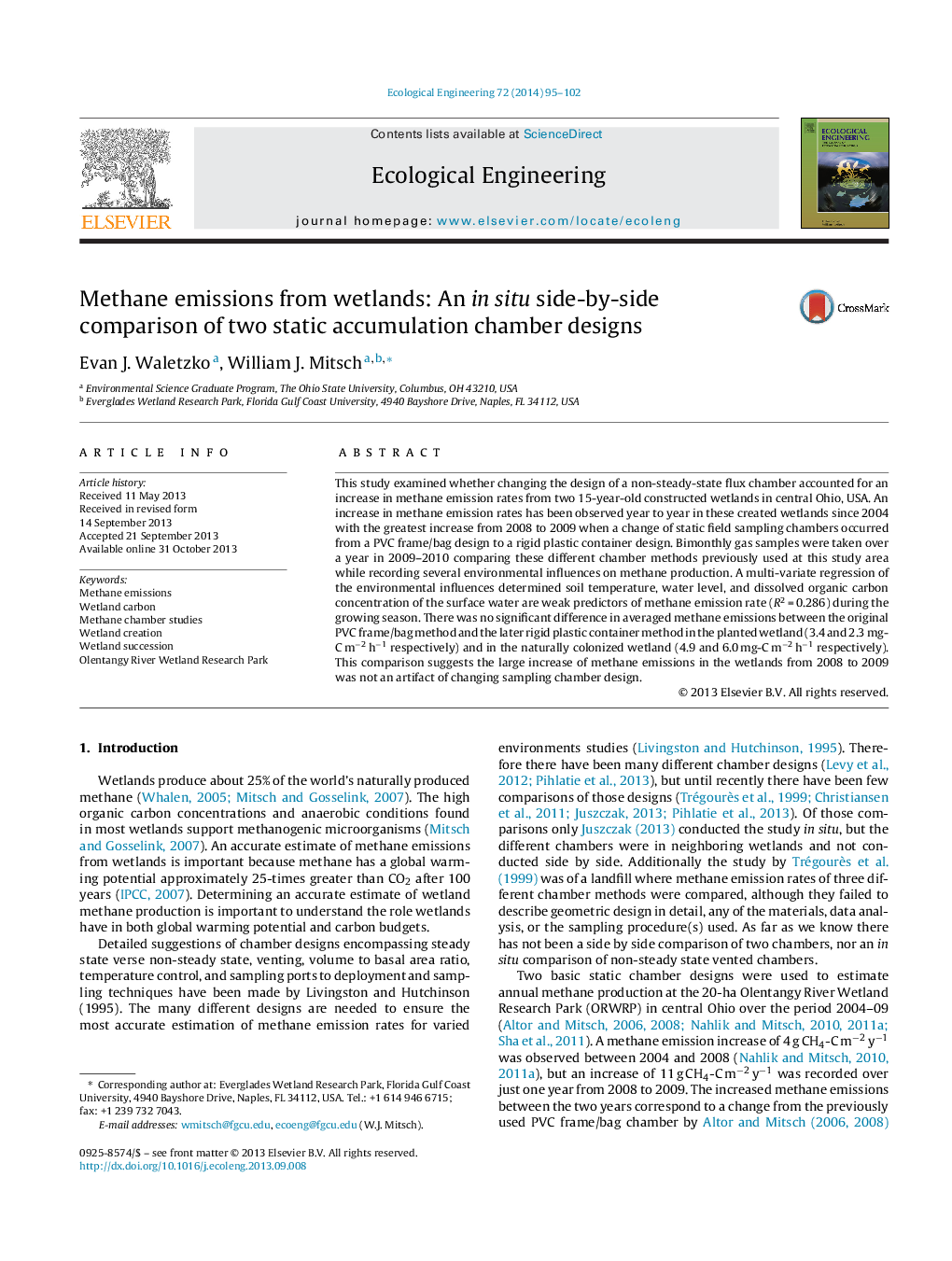| Article ID | Journal | Published Year | Pages | File Type |
|---|---|---|---|---|
| 4389363 | Ecological Engineering | 2014 | 8 Pages |
Abstract
This study examined whether changing the design of a non-steady-state flux chamber accounted for an increase in methane emission rates from two 15-year-old constructed wetlands in central Ohio, USA. An increase in methane emission rates has been observed year to year in these created wetlands since 2004 with the greatest increase from 2008 to 2009 when a change of static field sampling chambers occurred from a PVC frame/bag design to a rigid plastic container design. Bimonthly gas samples were taken over a year in 2009-2010 comparing these different chamber methods previously used at this study area while recording several environmental influences on methane production. A multi-variate regression of the environmental influences determined soil temperature, water level, and dissolved organic carbon concentration of the surface water are weak predictors of methane emission rate (R2Â =Â 0.286) during the growing season. There was no significant difference in averaged methane emissions between the original PVC frame/bag method and the later rigid plastic container method in the planted wetland (3.4 and 2.3Â mg-CÂ mâ2Â hâ1 respectively) and in the naturally colonized wetland (4.9 and 6.0Â mg-CÂ mâ2Â hâ1 respectively). This comparison suggests the large increase of methane emissions in the wetlands from 2008 to 2009 was not an artifact of changing sampling chamber design.
Related Topics
Life Sciences
Agricultural and Biological Sciences
Ecology, Evolution, Behavior and Systematics
Authors
Evan J. Waletzko, William J. Mitsch,
